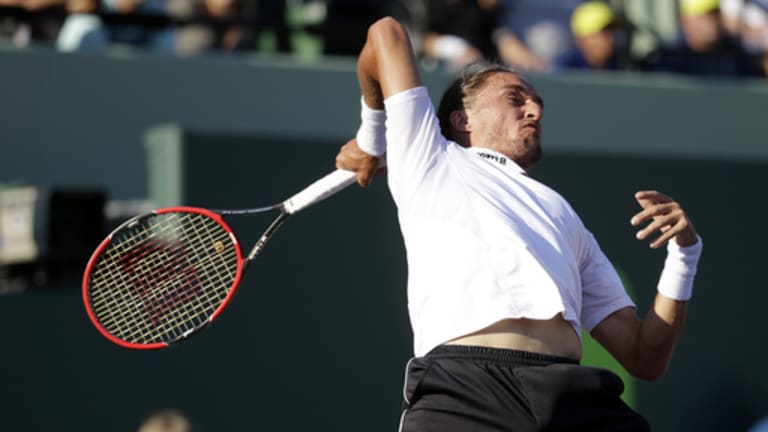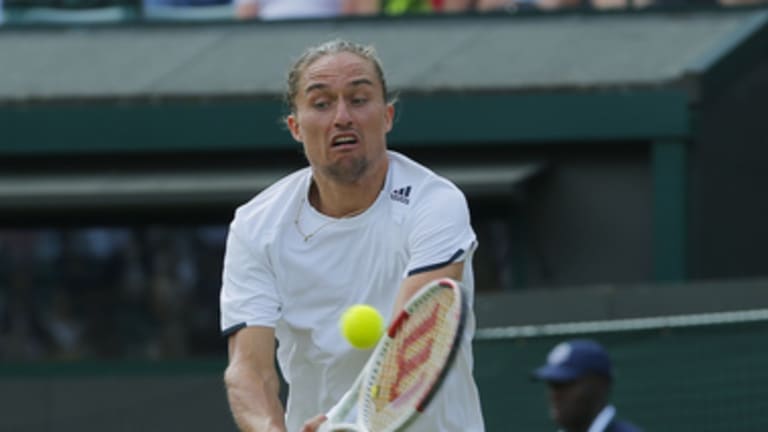Some pros play to win tournaments; Alexandr Dolgopolov, judging by his wildly up-and-down results over the years, plays to stay in tournaments. Whenever the man known as The Dog loses one too many first-round matches, or goes on one too many walkabouts, and sees his ranking slip toward qualifier territory, he has a knack for gathering himself and putting together a run of good form. On the one hand, you can never count Dolgopolov in, no matter how big his lead in a match may be; but you can't write him off, either. After all, this 26-year-old Dog has always had every trick in the tennis book.
Now Dolgopolov is in the middle of another good run. After undergoing knee surgery in 2014, he watched his ranking drop from No. 23 in January of this year to No. 80 by spring, and he lost in the first round at the Australian Open and French Open. The qualies loomed, but they also served as motivation.
In Rome, Dolgopolov qualified and won a round. At Queen’s, he beat Rafael Nadal (before losing, in predictably unpredictable fashion, to Guillermo Garcia-Lopez in the next round). He made the semis in Nottingham, and after winning two rounds each in Washington, D.C. and Montreal, he qualified for the main draw in Cincinnati and grabbed a first-round bye when Kei Nishikori withdrew. Dolgopolov has made the most of his good fortune, becoming the first qualifier to reach the Cincy semis in two decades, and recording his first win in five tries against Tomas Berdych.
In that surprisingly straightforward 6-4, 6-2 victory, Dolgopolov was back in full, idiosyncratic flight. The Ukrainian has always played tennis inside-out, with maximum flair, and, at times, minimal logic. He puts reverse sidespin on his backhand. He leaps into his buggy-whip forehand and brings his racquet over his head like a bolo punch. He floats to the ball casually, but can rocket it off his strings once he’s there. His drop shot may be his most consistent weapon. He has more variety with his two-handed backhand than most players do with their one-handers.
Dolgopolov’s mother was a gymnast, and he virtually takes flight when he serves. Even between points, he walks with a spring in his step, as if his feet are lighter than yours and mine. But as with all natural-born athletes, his easy movement masks the frantic work that makes it possible. After many of his matches, Dolgopolov has to throw away his sneakers, because he has burned a hole in them. On Friday, a TV commentator, watching Dolgo make a seemingly impossible get, exclaimed, “He’s one big, walking fast-twitch muscle!”

